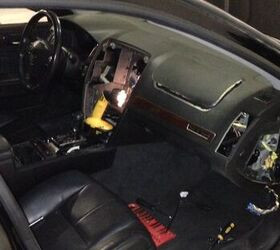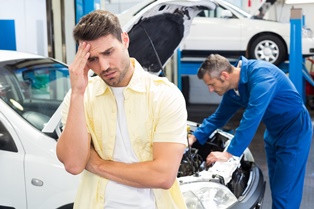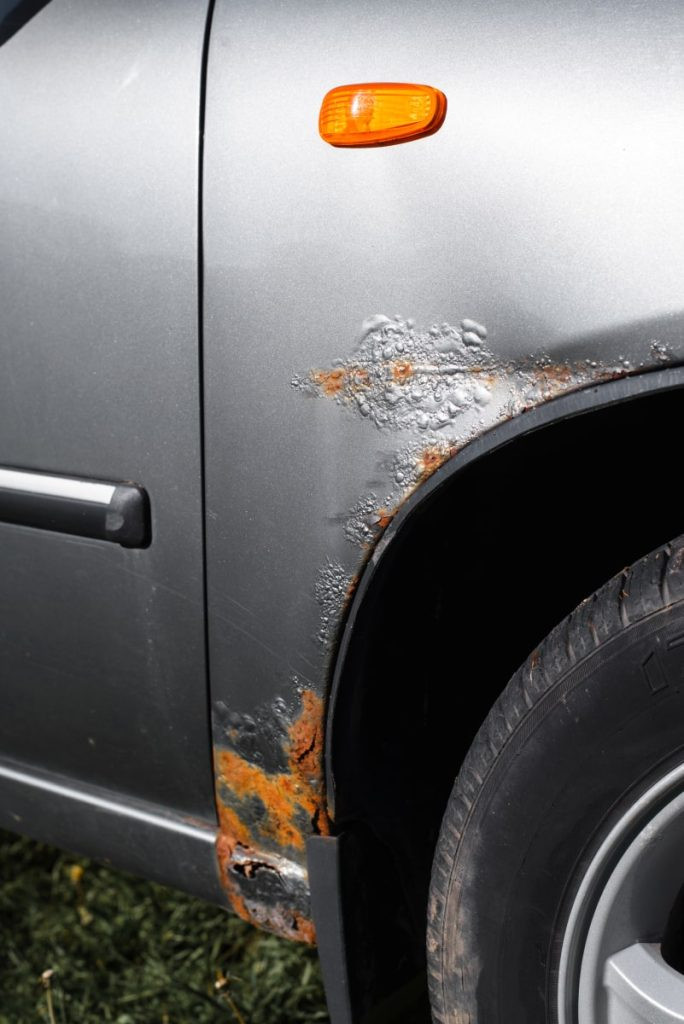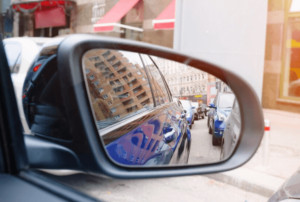How Much To Fix A Salvage Car: A Comprehensive Guide

Fixing a salvage car can be an attractive option, offering potential savings compared to buying a clean-title vehicle. But how much does it really cost to fix a salvage car? At CARDIAGTECH.NET, we provide the tools and knowledge you need to make informed decisions and potentially save money on your automotive repairs. Let’s explore the costs, considerations, and benefits of fixing a salvage car, while understanding how CARDIAGTECH.NET can help you every step of the way with top-notch auto repair equipment.
1. Understanding Salvage Titles and Their Implications
Before diving into the costs, it’s crucial to understand what a salvage title means. A salvage title is issued to a vehicle that has been declared a total loss by an insurance company. This usually happens when the cost of repairing the vehicle exceeds its market value before the damage occurred.
1.1. What Constitutes a Salvage Title?
A car receives a salvage title when an insurance company determines that the cost to repair the vehicle surpasses a certain percentage of its pre-accident value. This percentage varies by state but typically ranges from 70% to 90%. The types of damage that lead to a salvage title include:
- Collision damage
- Flood damage
- Fire damage
- Extensive vandalism
1.2. Implications of Owning a Salvage Title Vehicle
Owning a salvage title vehicle has several implications:
- Resale Value: Salvage title cars have significantly lower resale values compared to clean title cars.
- Insurance: Some insurance companies may refuse to insure a salvage title vehicle, or they may offer limited coverage.
- Financing: Securing a loan for a salvage title vehicle can be challenging, as many lenders are hesitant to finance them.
- Inspection: To legally drive a salvage title car, it must pass a state inspection to ensure it meets safety standards.
2. Estimating the Cost to Fix a Salvage Car
Estimating the cost to fix a salvage car involves several factors, including the extent of the damage, the availability and cost of parts, and labor expenses.
2.1. Assessing the Damage
The first step is to thoroughly assess the damage. This often requires a professional inspection. Look for:
- Structural Damage: Frame damage can be expensive to repair and may require specialized equipment.
- Mechanical Damage: Engine, transmission, and drivetrain issues can add significant costs.
- Body Damage: Dents, scratches, and missing panels need to be addressed for both aesthetics and safety.
- Electrical Damage: Damaged wiring, sensors, and electronic components can be challenging to diagnose and repair.
- Interior Damage: Issues like damaged airbags, upholstery, and dashboard components can contribute to the overall cost.
2.2. Cost of Parts
The cost of parts can vary widely depending on the make and model of the car, as well as whether you opt for new, used, or aftermarket parts.
- New Parts: These are the most expensive but offer the best quality and reliability.
- Used Parts: Sourced from salvage yards, used parts can save money but may have wear and tear.
- Aftermarket Parts: These are generally cheaper than new OEM (Original Equipment Manufacturer) parts but may not meet the same quality standards.
Consider using CARDIAGTECH.NET to identify and source parts efficiently. Our diagnostic tools can help pinpoint exactly which parts need replacing, saving you time and money.
2.3. Labor Costs
Labor costs can be a significant portion of the total repair expenses. Rates vary by location and the type of repair shop.
- Dealerships: Typically charge the highest labor rates.
- Independent Repair Shops: Often offer more competitive rates.
- DIY Repair: If you have the skills and tools, doing the repairs yourself can save a considerable amount on labor costs.
CARDIAGTECH.NET supports DIY enthusiasts and professional mechanics alike, offering a wide range of tools and equipment to facilitate efficient and accurate repairs.
2.4. Inspection Fees
After completing the repairs, the vehicle must pass a state inspection to be re-titled as a rebuilt vehicle. Inspection fees vary by state but typically range from $50 to $200.
2.5. Additional Costs
Don’t forget to factor in additional costs such as:
- Towing fees
- Storage fees
- Permit fees
- Re-titling fees
3. Breaking Down the Costs: A Detailed Look
To provide a clearer picture of the costs involved, let’s break down the expenses for various types of repairs.
3.1. Body Work
Body work involves repairing or replacing damaged panels, fixing dents, and repainting the vehicle.
| Repair Type | Description | Estimated Cost |
|---|---|---|
| Panel Replacement | Replacing a damaged fender, door, or quarter panel. Includes the cost of the panel and labor for installation and painting. | $300 – $1,500+ |
| Dent Repair | Fixing dents using techniques like paintless dent repair (PDR) or traditional body filler methods. | $100 – $800+ |
| Bumper Repair/Replace | Repairing minor bumper damage or replacing a severely damaged bumper. Includes the cost of the bumper and labor for installation and painting. | $200 – $1,000+ |
| Painting | Repainting sections or the entire vehicle to match the original color. | $150 – $500+ per panel, $1,000 – $5,000+ for entire car |
3.2. Mechanical Repairs
Mechanical repairs address issues with the engine, transmission, brakes, suspension, and other mechanical components.
| Repair Type | Description | Estimated Cost |
|---|---|---|
| Engine Repair/Replace | Repairing or replacing a damaged engine. Includes the cost of parts and labor for installation. | $500 – $5,000+ |
| Transmission Repair/Replace | Repairing or replacing a damaged transmission. Includes the cost of parts and labor for installation. | $800 – $4,000+ |
| Brake Repair | Replacing brake pads, rotors, calipers, or brake lines. Includes the cost of parts and labor. | $150 – $800+ per axle |
| Suspension Repair | Replacing struts, shocks, springs, or control arms. Includes the cost of parts and labor. | $200 – $1,500+ per axle |
| Exhaust System Repair | Repairing or replacing damaged exhaust pipes, mufflers, or catalytic converters. Includes the cost of parts and labor. | $100 – $1,000+ |
3.3. Electrical Repairs
Electrical repairs involve fixing damaged wiring, sensors, and electronic components.
| Repair Type | Description | Estimated Cost |
|---|---|---|
| Wiring Repair | Fixing damaged or corroded wiring. Includes the cost of materials and labor. | $100 – $500+ |
| Sensor Replacement | Replacing faulty sensors such as oxygen sensors, mass airflow sensors, or ABS sensors. Includes parts and labor. | $80 – $400+ |
| Computer Repair | Repairing or replacing the car’s computer (ECU). Includes programming and labor. | $300 – $1,500+ |
| Battery Replacement | Replacing a dead or weak battery. Includes the cost of the battery and labor for installation. | $100 – $300+ |
3.4. Interior Repairs
Interior repairs address issues like damaged airbags, upholstery, and dashboard components.
| Repair Type | Description | Estimated Cost |
|---|---|---|
| Airbag Replacement | Replacing deployed airbags and related sensors. Includes the cost of parts, programming, and labor. | $500 – $2,000+ per airbag |
| Upholstery Repair | Repairing or replacing damaged seats, carpets, or headliners. | $100 – $1,000+ |
| Dashboard Repair | Fixing cracks, scratches, or broken components on the dashboard. | $200 – $800+ |
| Component Replacement | Replacing interior components such as door panels, consoles, or trim pieces. | $100 – $500+ per component |
 Salvage car repair
Salvage car repair
3.5. Case Study: 2015 Honda Civic Salvage Repair
To illustrate the potential costs, let’s consider a 2015 Honda Civic with a salvage title due to collision damage.
- Initial Purchase Price: $4,000
- Estimated Repairs:
- Body Work (panel replacement, dent repair, painting): $2,500
- Mechanical Repairs (suspension, brakes): $1,200
- Electrical Repairs (sensor replacement): $300
- Inspection and Fees: $200
- Total Repair Cost: $4,200
- Total Investment: $8,200
A comparable clean title 2015 Honda Civic might sell for around $12,000. In this scenario, fixing the salvage car could save approximately $3,800.
4. Factors Influencing Repair Costs
Several factors can influence the cost to fix a salvage car.
4.1. Vehicle Make and Model
Luxury and high-performance vehicles typically have more expensive parts and higher labor rates compared to mainstream models.
4.2. Extent of Damage
The more extensive the damage, the higher the repair costs. Cars with significant structural damage or major mechanical issues will be more expensive to fix.
4.3. Parts Availability
Rare or hard-to-find parts can increase the cost and time required for repairs.
4.4. Location
Labor rates and parts prices vary by geographic location. Urban areas tend to have higher costs than rural areas.
4.5. DIY vs. Professional Repair
Doing the repairs yourself can save on labor costs, but it requires the necessary skills, tools, and time. Professional repairs offer convenience and expertise but come at a higher price.
5. Benefits of Fixing a Salvage Car
Despite the challenges, fixing a salvage car can offer several benefits.
5.1. Cost Savings
The primary benefit is the potential for significant cost savings compared to buying a clean title car. If you can source parts cheaply and do some of the repairs yourself, you can save a considerable amount.
5.2. Customization
Fixing a salvage car allows you to customize it to your liking. You can choose aftermarket parts, upgrade components, and personalize the vehicle to suit your preferences.
5.3. Learning Experience
Repairing a salvage car can be a valuable learning experience. You’ll gain hands-on knowledge of automotive repair and maintenance, which can save you money on future repairs.
5.4. Satisfaction
There’s a sense of satisfaction that comes from bringing a salvage car back to life. It’s a rewarding experience to see a vehicle that was once considered a total loss transformed into a reliable and attractive car.
6. Risks and Challenges
Fixing a salvage car also comes with risks and challenges.
6.1. Hidden Damage
Hidden damage can be a significant issue. What appears to be a minor problem on the surface can sometimes reveal more extensive damage underneath.
6.2. Time Commitment
Repairing a salvage car can be time-consuming, especially if you’re doing the work yourself. It can take weeks or even months to complete the repairs, depending on the extent of the damage and your availability.
6.3. Unexpected Costs
Unexpected costs can arise during the repair process. You may encounter unforeseen issues that require additional parts or labor, increasing the overall cost.
6.4. Safety Concerns
Safety is a critical consideration when fixing a salvage car. It’s essential to ensure that all repairs are done correctly and that the vehicle meets safety standards. Improperly repaired structural damage or faulty airbags can pose a significant risk.
6.5. Paperwork and Legal Issues
Dealing with salvage titles, inspections, and re-titling can be complex and time-consuming. You’ll need to navigate state regulations and ensure that all paperwork is completed correctly.
7. Step-by-Step Guide to Fixing a Salvage Car
Here’s a step-by-step guide to help you through the process of fixing a salvage car.
Step 1: Research and Planning
- Assess Your Skills: Determine your mechanical skills and what repairs you can handle yourself.
- Set a Budget: Establish a realistic budget that includes the cost of the car, parts, labor, and fees.
- Research the Car: Investigate the specific make and model of the car to understand potential issues and parts availability.
Step 2: Purchase the Salvage Car
- Find a Reputable Source: Buy from a reputable auction, dealer, or private seller.
- Inspect the Car: Thoroughly inspect the car before buying it, looking for any hidden damage.
- Check the Title: Ensure the title is a salvage title and that you can legally purchase and re-title the car in your state.
Step 3: Assess the Damage
- Professional Inspection: Take the car to a trusted mechanic for a professional inspection.
- Detailed List: Create a detailed list of all the necessary repairs, including parts and labor.
- Prioritize Repairs: Determine which repairs are essential for safety and functionality.
Step 4: Source Parts
- Compare Prices: Shop around for the best prices on parts, considering new, used, and aftermarket options.
- Quality Parts: Prioritize quality parts, especially for critical components like brakes and suspension.
- CARDIAGTECH.NET Resources: Use CARDIAGTECH.NET to source parts efficiently and accurately, ensuring you get the right components for your vehicle.
Step 5: Perform Repairs
- DIY or Professional: Decide whether to do the repairs yourself or hire a professional mechanic.
- Follow Manuals: Use repair manuals and online resources to guide you through the repair process.
- Safety First: Always prioritize safety and use appropriate safety gear when working on the car.
Step 6: Inspection and Re-Titling
- Complete Repairs: Ensure all repairs are completed to meet state safety standards.
- Schedule Inspection: Schedule an inspection with your state’s DMV or authorized inspection station.
- Re-Title the Car: Once the car passes inspection, complete the paperwork to re-title it as a rebuilt vehicle.
8. How CARDIAGTECH.NET Can Help
CARDIAGTECH.NET offers a range of tools and resources to assist you in fixing a salvage car.
8.1. Diagnostic Tools
Our diagnostic tools can help you accurately identify and diagnose issues with your vehicle, saving you time and money on repairs.
8.2. Parts Sourcing
We can help you source the parts you need at competitive prices, ensuring you get the right components for your vehicle.
8.3. Repair Information
CARDIAGTECH.NET provides access to repair manuals, technical information, and online resources to guide you through the repair process.
8.4. Community Support
Join our community forum to connect with other car enthusiasts and get advice and support for your salvage car project.
9. Real-World Examples: Success Stories
Hearing about others’ experiences can provide valuable insights and encouragement.
9.1. John’s Story: 2012 Ford Mustang
John purchased a 2012 Ford Mustang with a salvage title for $5,000. The car had front-end damage, but the engine and drivetrain were in good condition. John, a skilled mechanic, did most of the repairs himself, sourcing used parts from local salvage yards. He spent approximately $3,000 on parts and materials and completed the repairs in three months. After passing inspection, John re-titled the car and now enjoys driving his rebuilt Mustang.
9.2. Sarah’s Story: 2016 Toyota Prius
Sarah bought a 2016 Toyota Prius with flood damage for $6,000. The car had extensive electrical issues, but the hybrid system was intact. Sarah hired a professional mechanic to handle the electrical repairs and sourced replacement parts online. She spent approximately $4,000 on repairs and passed inspection after two months. Sarah now drives her fuel-efficient Prius and saved thousands compared to buying a clean title model.
10. Alternatives to Fixing a Salvage Car
If fixing a salvage car seems too daunting, there are alternative options to consider.
10.1. Buying a Used Car
Purchasing a used car with a clean title is a less risky option. You’ll avoid the challenges of repairing a salvage car and can find a reliable vehicle that meets your needs.
10.2. Leasing a Car
Leasing a car offers the benefit of driving a new vehicle with a warranty. You won’t have to worry about major repairs, and you can upgrade to a new car every few years.
10.3. Public Transportation
If feasible, using public transportation can save you money on car payments, insurance, and maintenance.
10.4. CARDIAGTECH.NET Assistance
Before making a decision, consult with CARDIAGTECH.NET. We can provide expert advice on the best course of action based on your skills, budget, and needs.
11. Frequently Asked Questions (FAQ)
11.1. Is it worth fixing a salvage car?
It can be worth it if you have the skills, time, and resources to do the repairs yourself or can find a reputable mechanic at a reasonable price.
11.2. Can I insure a salvage title car?
Some insurance companies will insure a salvage title car, but coverage may be limited.
11.3. Can I finance a salvage title car?
Securing a loan for a salvage title car can be challenging, as many lenders are hesitant to finance them.
11.4. What is a rebuilt title?
A rebuilt title is issued to a salvage title car that has been repaired and passed a state inspection.
11.5. How do I find a reputable mechanic to fix my salvage car?
Ask for recommendations from friends, family, or online forums. Check online reviews and verify the mechanic’s credentials.
11.6. What are the most common issues with salvage cars?
Common issues include structural damage, mechanical problems, electrical issues, and cosmetic damage.
11.7. How can CARDIAGTECH.NET help me fix my salvage car?
CARDIAGTECH.NET offers diagnostic tools, parts sourcing, repair information, and community support to assist you in fixing your salvage car.
11.8. What are the steps to re-title a salvage car?
The steps include completing repairs, passing a state inspection, and submitting the required paperwork to your state’s DMV.
11.9. How much does it cost to inspect a salvage car?
Inspection fees vary by state but typically range from $50 to $200.
11.10. Where can I buy salvage cars?
You can buy salvage cars from auctions, dealers, and private sellers.
12. Conclusion: Making an Informed Decision
Fixing a salvage car can be a rewarding and cost-effective option, but it’s essential to approach it with realistic expectations and a thorough understanding of the costs and challenges involved. By carefully assessing the damage, sourcing parts wisely, and either performing the repairs yourself or hiring a qualified mechanic, you can potentially save thousands of dollars and enjoy driving a rebuilt vehicle.
Remember, CARDIAGTECH.NET is here to support you every step of the way with our diagnostic tools, parts sourcing assistance, and expert advice. Whether you’re a seasoned mechanic or a DIY enthusiast, we have the resources you need to successfully fix your salvage car and get back on the road.
Are you ready to start your salvage car repair project? Contact CARDIAGTECH.NET today at 276 Reock St, City of Orange, NJ 07050, United States, or reach out via Whatsapp at +1 (641) 206-8880. Visit our website CARDIAGTECH.NET for more information and to explore our wide range of auto repair equipment. Let us help you transform that salvage car into a reliable and enjoyable vehicle while saving money in the process.






